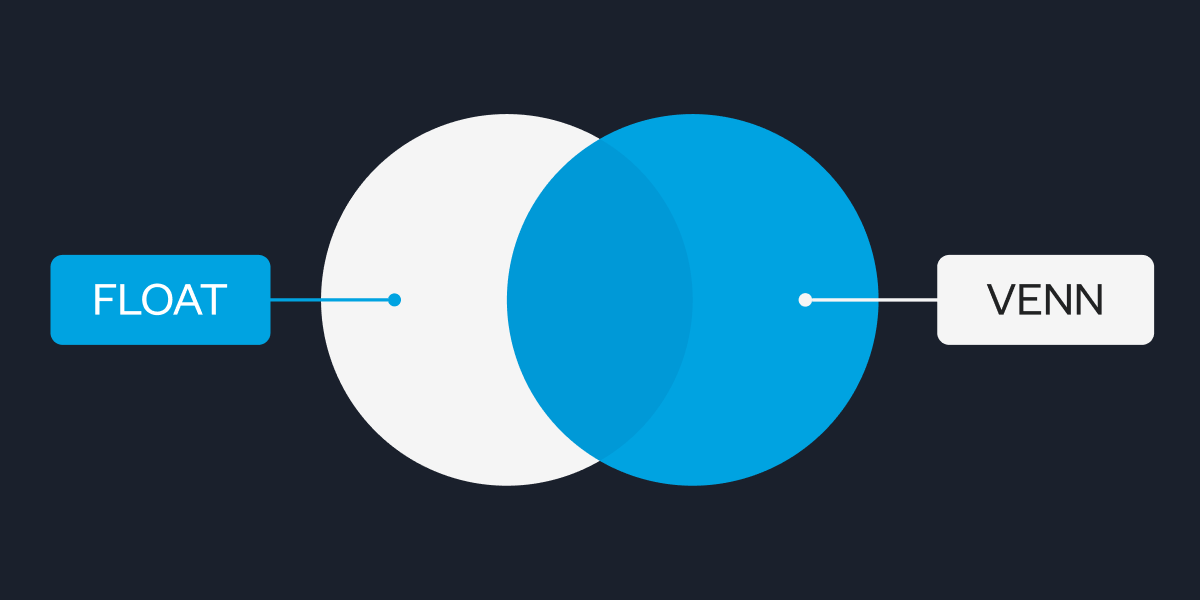Expense Management
Working Capital Management Software Guide
There’s a lot that goes into managing your working capital. But, like many things, the right software can help make it easier.
November 28, 2025

Working capital is what keeps every business running. It’s what ensures bills get paid, payroll runs on time and growth plans move forward without roadblocks. But for many controllers and CFOs, managing working capital still comes down to a patchwork of spreadsheets, disconnected systems and manual processes. The result? Limited visibility, inaccurate forecasts and payment decisions made in the dark.
That’s why more finance leaders are turning to working capital management software. These tools bring receivables, payables and liquidity data into one place, giving decision-makers real-time visibility into cash flow. With better forecasting, smarter payment scheduling and stronger liquidity buffers, software turns working capital from a constant challenge into a strategic advantage.
This guide explains what working capital management software is, why it matters and how to select the right solution for your business. We’ll also show you how Float’s integrated approach goes beyond standalone tools to help businesses manage their working capital with accuracy, efficiency and confidence.
What is working capital management software?
Working capital management software helps businesses keep track of the money coming in and going out. It connects the dots between accounts receivable processes (the cash you’re waiting on), accounts payable (the bills you need to pay) and your cash on hand. The goal is to give controllers and CFOs a real-time picture of liquidity so they can make smarter decisions about timing, investments and growth.
Most tools on the market share a few common features:
- Cash flow forecasting that pulls data from your accounting and banking systems.
- Payment scheduling to help align receivables with payables and avoid liquidity gaps.
- Liquidity monitoring dashboards that show your current and projected cash positions.
Who uses this type of software? Primarily financial controllers and CFOs, or anyone responsible for making sure there’s enough cash to cover today’s obligations while still planning for tomorrow’s opportunities. For small businesses, this might mean ensuring there’s enough buffer to manage payroll. For larger enterprises, it’s about optimizing capital strategy across multiple teams, business units and banking relationships.
Key pain points in working capital management
Even with the best intentions, many businesses struggle to manage working capital effectively. The challenges usually come down to a mix of visibility gaps, manual processes and poor alignment between payables and receivables.
But let’s get into more detail.
Forecasting accuracy
Cash flow forecasts can end up built on static spreadsheets and guesswork without integrated financial data. This makes it difficult to anticipate shortfalls or plan for growth with confidence. For example, a controller might build a forecast that assumes customer payments always arrive on the due date. Just a few late invoices mean the plan collapses and the business is scrambling for liquidity.
Payment timing
When receivables are received late and payables are paid early, liquidity gaps appear. Picture this: a supplier invoice lands a week before a major customer payment clears. Without real-time visibility, finance leaders scramble to cover the shortfall, shifting payments, dipping into credit lines or delaying other obligations. It’s a stressful cycle that eats into efficiency and confidence. This is where payment optimization comes in.
Limited visibility
Siloed tools make it hard to get a clear, real-time picture of cash positions. By the time numbers are reconciled, the data is already outdated. It’s not unusual for controllers to spend hours pulling reports from multiple systems, only to present leadership with insights that are already a week behind.
Manual processes
Disjointed systems and spreadsheet-heavy workflows create errors, delays and frustration. As finance stacks grow more complex, manual processes only widen the risks. Think of an AP team re-keying the same vendor bill three times across different systems. Every extra step wastes time and increases the chance of a mistake that could throw off the month-end close.
These pain points are exactly why working capital management software has become a crucial tool for financial leaders. Pulling data into one place and automating routine tasks helps controllers and CFOs focus less on patching leaks and more on building a stronger capital strategy.
How integrated automation solves these pain points
Platforms like Float help finance teams eliminate manual reconciliation and outdated spreadsheets by centralizing expenses, bill payments and real-time cash visibility in one place. Controllers and CFOs can automate payment scheduling, track liquidity in real time and forecast cash flow accurately without juggling multiple tools or downloads.
For Canadian businesses, Float also simplifies compliance and offers localized support, making it easier to manage cash flow confidently and efficiently.
Benefits of working capital management software
The right working capital management software can change the way your business manages liquidity (not to mention make your finance team’s lives easier). By replacing manual work and disconnected tools, controllers and CFOs can get the clarity they need to make better decisions faster.
Here are some of the benefits.
- Real-time cash flow visibility: Instead of waiting for month-end reports, working capital management software provides a live view of where cash stands today and how it’s projected to change tomorrow.
- Automated forecasting: By pulling data directly from accounting and banking systems, forecasts update automatically. That means fewer errors, less time in spreadsheets and more accurate planning.
- Smarter payment timing: Controllers can use payment scheduling tools to extend payables, accelerate receivables and smooth out liquidity gaps.
- Stronger liquidity buffers: With better insight into inflows and outflows, businesses can maintain healthier working capital ratios and protect themselves from unexpected shocks.
- Strategic insights for CFOs: Beyond day-to-day operations, software helps leadership teams model different scenarios, test capital strategies and plan for growth with confidence.
When managed well, working capital becomes a lever for stability and growth.
3 types of solutions on the market
Not all working capital management software will fit your business needs. Finance leaders typically encounter three categories of solutions, each with its own advantages and trade-offs.
1. Standalone working capital tools
These focus narrowly on forecasting and liquidity dashboards. They’re helpful for visibility, but can create yet another silo in the finance stack. Without integration into accounts payable or receivable processes, they can only go so far.
2. ERP-based modules
Large enterprises often use Enterprise Resource Planning (ERP) systems that include working capital or treasury modules. While broad in scope, these modules can be complex, costly and time-consuming to implement. For many SMBs, they’re simply overkill.
3. Integrated financial operations platforms
This is where platforms like Float stand out. Instead of adding another silo, integrated platforms combine expense management, payment scheduling and real-time cash visibility in one place. The result is a tool that helps controllers and CFOs manage liquidity while also streamlining day-to-day financial operations.
Comparing types of working capital solutions
| Solution type | Pros | Cons |
| Standalone tools | Simple setup, focused on forecasting and liquidity dashboards | Add another silo to the finance stack; limited integration with AP/AR; can’t optimize payment timing end-to-end |
| ERP modules | Broad functionality, centralized within existing enterprise systems | Expensive, complex to implement, often overkill for SMBs, slow to adapt |
| Integrated platforms (like Float) | Combine forecasting, expense management, and payment scheduling in one place; real-time visibility; fewer tools to manage | May require some onboarding to replace legacy processes, but the payoff is faster, simpler workflows and stronger liquidity oversight |
For businesses looking to move beyond spreadsheets without investing in a complete ERP, an integrated platform offers the balance of flexibility, insight and efficiency. Platforms like Float bring together cash flow forecasting, expense management, and payment scheduling in one unified system.
With Float, businesses can also access features like fast funding, high-yield operating accounts and transparent FX rates, helping them optimize working capital while earning more on available funds.
Best practices for controllers and CFOs
The best working capital strategies are the result of consistent habits that turn liquidity into a source of strength rather than stress. For controllers and CFOs, it often starts with centralizing data. When receivables, payables and cash positions live in one system, forecasting accuracy improves dramatically and leaders can act on real numbers instead of outdated reports.
Payment scheduling is another powerful lever. Businesses can protect liquidity and avoid unnecessary reliance on credit by strategically timing when cash goes out and comes in. The key is balance: extending payables where it makes sense while encouraging faster collections from customers.
Regularly tracking KPIs such as days sales outstanding (DSO), days payables outstanding (DPO) and the current ratio helps finance leaders catch potential gaps early. Instead of discovering issues at month-end, controllers can address risks as they arise.
Finally, automation and integration tie it all together. Routine tasks like reconciliations and approvals shouldn’t consume your controller’s week. By using an integrated financial operations platform like Float, your team can cut out repetitive work, connect spend management to cash flow forecasting and unlock more time for strategy and process improvements.
Turn working capital into your competitive edge
Working capital is the fuel that keeps businesses moving. Managed well, it gives organizations the confidence to invest, hire and grow. Managed poorly, it creates liquidity crunches that slow everything down.
That’s why software has become essential. Controllers and CFOs need more than spreadsheets and siloed dashboards. They need tools that bring clarity, speed and control. Standalone working capital apps can offer quick wins, but they often add complexity to an already crowded finance stack. ERP modules deliver breadth, but they’re expensive and cumbersome for businesses that need agility.
The better path is integration.
By combining cash flow management, payment scheduling and expense tracking in one financial operations platform, leaders gain real-time visibility and the ability to act strategically. Float was built with this in mind, helping finance teams optimize working capital, protect liquidity and reduce the friction of managing multiple disconnected tools.
For today’s financial leaders, the takeaway is clear: working capital management is no longer just about keeping the lights on. It’s about using technology to turn cash flow into a competitive advantage. Explore how Float can do that for you.
Written by
All the resources

Expense Management
Float vs Venn: Which Solution Fits Your Business?
What's right for your business, Float or Venn? This article dives into the pros and cons of each, as well
Read More
Cash Flow Optimization
How to Make EFT Payments in Canada: Complete 2025 Guide
Learn how to initiate EFT Payments as a Canadian Business and innovative solutions available on the market, like Float, that
Read More
Cash Flow Optimization
Cash Flow Management for Canadian Businesses: 2025 Strategic Guide
Unlock business growth with our ultimate guide to understanding and improving cash flow in your business. Learn key strategies and
Read More




